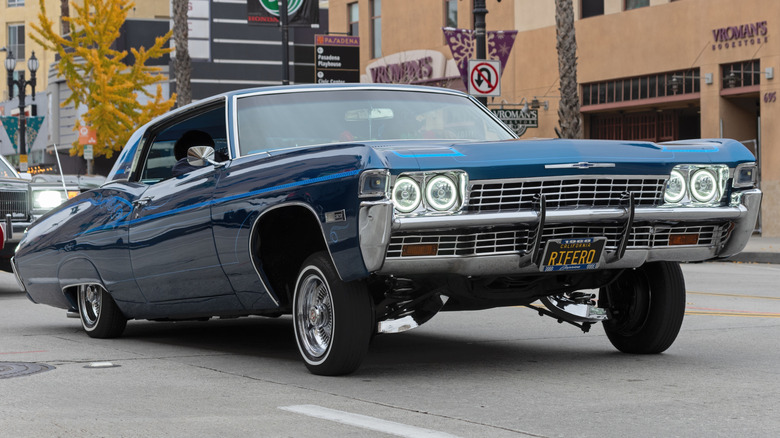Why Did Los Angeles Ban (And Then Unban) Lowrider Cruising?
Lowrider culture can trace its roots back to the 1950s, but for decades, it was criminalized across California. Alongside other automotive subcultures that emerged around the same time, lowriding centered around building unique, custom cars, then showing them off on street cruises and at community meets. However, unlike hot rodders and drag racers, lowriders didn't focus on performance, but rather on visuals. Cars cruised "low and slow," attracting crowds as they went. A range of popular cars ended up being converted into lowriders, with Chevy models like the Impala being particularly common choices. By the '80s, lowrider culture had evolved to include increasingly large events, but inevitably, those larger events drew more scrutiny from law enforcement.
Alongside this added attention came claims that lowriding had become associated with gang culture, and that large events had become a magnet for antisocial behavior. This was enough to lead cities across California to implement local rules and regulations to make cruising illegal, with state law allowing cities to explicitly ban cruising in 1982. In L.A., the city's Police Department would line up tow trucks to seize any cars deemed to be breaking the law under the new rules. This didn't stop lowrider meets in the city, but it did mean that any participants now faced having their prized possessions taken away from them if they were caught.
California unbanned lowrider cruising in 2024
The push to overturn the long-standing ban on lowrider cruising started gaining traction during the COVID-19 pandemic. The social distancing rules in place at the time meant that fixed-location car meets were discouraged, with even the LA Auto Show being cancelled in 2020. In contrast, cruising ticked all the right boxes as a pandemic-safe way to continue enjoying car culture. However, law enforcement disagreed and swiftly intervened with planned cruise events. This new round of enforcement action helped galvanize the community into action, which in turn led to California Assembly member David Alvarez introducing a new bill to repeal the cruising ban.
This bill, namely Assembly Bill 436, altered the California state legislature to remove the rights of cities to ban cruising. It was signed into law and took effect on January 1, 2024, reversing the cruising bans that had been in place for four decades as well as enshrining in law the rights of lowriders owners to drive their cars without being targeted. That means lowered versions of sought-after '64 Chevy Impalas, Cadillacs, Lincolns, and all other kinds of custom American classics are now able to take to the streets of Los Angeles once again, almost half a century after the city's police department started its efforts to stamp out the culture.

